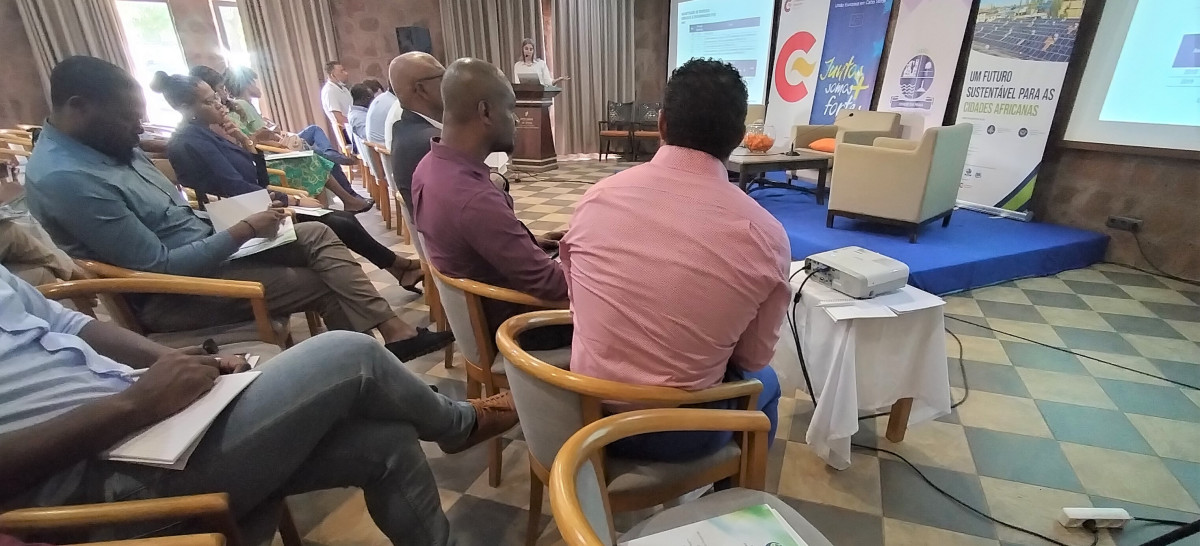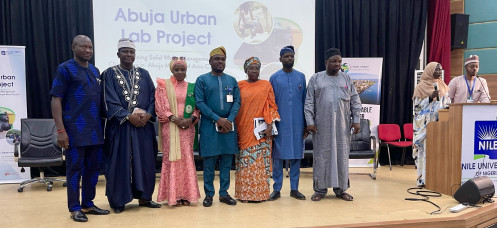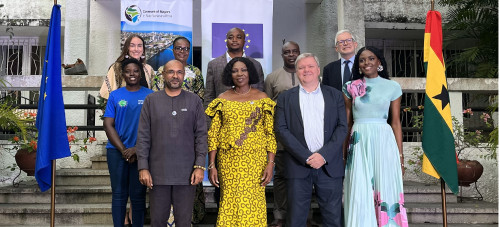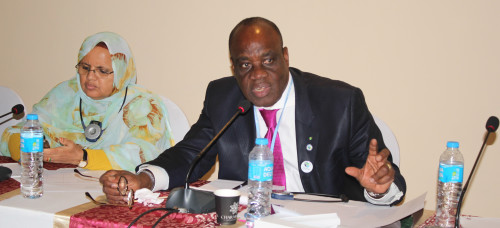Climate planning and financing: Present and future in Cabo Verde
Published: 19 Jan 2023
Adaptation
Climate Finance
Mitigation

The Municipalities of Praia and Ribeira Grande de Santiago voluntarily committed to becoming key actors in the fight against climate change with CoM SSA in 2020. The first step to turn their political commitment into tangible actions is to create a Sustainable Energy Access and Climate Action Plan (SEACAP) that will guide all the actions that the municipalities need to undertake to make their territories more adapted, safe and resilient to the effects of climate change.
Given the estimates of population mobility, cities must play a fundamental role in acting against climate change. Flows from rural areas to urban centres have been observed since the beginning of the 21st century. This trend is expected to continue and increase as the world's population grows. This is particularly evident in developing countries, where cities and towns are growing rapidly.
Cabo Verde is an archipelago in the Atlantic Ocean, 570 km off the coast of Senegal, which, like other parts of sub-Saharan Africa, is experiencing the effects of climate change more intensely compared to other parts of the world. On the island of Santiago, the municipalities of Praia and Ribeira Grande de Santiago are pioneers as signatories to a global initiative on climate change and access to renewable energy. They voluntarily made a political commitment to act on climate change and have been participating since 2020 in the demanding work of implementing the Covenant of Mayors project co-financed by the European Union (EU) and the Spanish Agency for International Development Cooperation (AECID). The aim is to transform this commitment, from both municipalities, into concrete actions, the first step being the creation of a Sustainable Energy Access and Climate Action Plan (SEACAP) that will allow them to implement all the necessary projects to transform their territories into sustainable and smart places in terms of energy use, as well as better adapted, safe and resilient to the effects of climate change.
Climate planning involves demanding technical expertise, and therefore the two municipalities called on climate experts at the consultancy group, Anthesis Lavola to develop a single climate action plan for both municipalities. We spoke to their team of climate experts about this joint SEACAP, its process and benefits:
Why is a climate action plan necessary when the needs of the municipality are better understood by their Municipal Chambers?
Municipalities are the administrations that know their localities best and have the responsibility to serve their citizens and plan the improvements needed to safeguard the services, well-being and development of their communities. However, climate change introduces a new scenario for these administrations. The climate is changing and new development needs and challenges are emerging that municipalities have not yet had on their radar. Defining a municipal roadmap to address climate change therefore becomes essential.
Municipalities are the administrations that know their localities best and have the responsibility to serve their citizens and plan the improvements needed to safeguard the services, well-being and development of their communities. However, climate change introduces a new scenario for these administrations. The climate is changing and new development needs and challenges are emerging that municipalities have not yet had on their radar. Defining a municipal roadmap to address climate change therefore becomes essential.
The two municipalities, despite their territorial proximity, have very different realities. Why can they work within the same SEACAP?
The problem of climate change is a global issue and generates a problem for local entities. Even though these municipalities experience different climate impacts and these impacts affect different communities they also have commonalities. The SEACAP framework is designed to address these shared needs and capacities in the fight against climate change. The joint SEACAP modality between two or more municipalities allows for the sharing of the methodology, framework and drafting of an overall final document while developing separate climate change mitigation and adaptation action plans tailored to the different realities that exist in each municipality. The joint modality generates a specific analysis and plan for each municipality. Using a joint process allows small municipalities to carry out the climate planning process which would be difficult to undertake independently due to the investment involved.
The problem of climate change is a global issue and generates a problem for local entities. Even though these municipalities experience different climate impacts and these impacts affect different communities they also have commonalities. The SEACAP framework is designed to address these shared needs and capacities in the fight against climate change. The joint SEACAP modality between two or more municipalities allows for the sharing of the methodology, framework and drafting of an overall final document while developing separate climate change mitigation and adaptation action plans tailored to the different realities that exist in each municipality. The joint modality generates a specific analysis and plan for each municipality. Using a joint process allows small municipalities to carry out the climate planning process which would be difficult to undertake independently due to the investment involved.
The impact of climate change affects many aspects of people's lives. How can we ensure that the climate action plan covers everyone's needs?
All relevant municipal departments are involved in both the analysis to investigate the fundamental climate risks, greenhouse gas emission inventories and access to energy, and in the design of the SEACAP. Other organisations are also involved for specific themes/areas (energy, waste, civil protection, natural heritage, etc.). This participatory model continues and becomes essential in the implementation phase, which will guarantee the success of the climate action plan itself.
The completion of the SEACAP is planned for the first half of 2023. Both municipalities will have a defined climate action plan, with a starting point based on the municipality’s current trajectory and a target horizon. This will enable them to define a well-formulated work plan for the implementation of climate change mitigation and adaptation actions, which will produce a wide range of joint benefits. In addition to the action plan itself, what other benefits will the SEACAP bring to these municipalities and their citizens?
The SEACAP addresses many issues and improvements needed to aid the development of the community in cross-cutting aspects, such as responding to the needs of vulnerable groups and/or the advancement of infrastructure and basic services, among others. It also includes actions focused on the care of local ecosystems which, beyond their climate regulation potential, also allow for the recovery of nature's contributions that may have been in decline for some time due to other degradation factors not related to climate change, such as overexploitation of resources, change in ecosystem use, pollution as well as the arrival of invasive alien species. In addition, the data collection effort contributes to the systematisation of information, which is essential for the continuous improvement of municipal management.
After the end of the SEACAP, municipalities will continue to work towards sustainable solutions to climate change impacts in their territories
In this process, we must remember that, like the climate, scenarios and realities of territories will change. The SEACAP is not a static instrument, it must adapt over time as the objectives set for the municipality are achieved. Once the plan is finalised, municipalities are required to produce a monitoring report every two years to report on the progress of the implementation of the planned actions, as well as any significant changes to the initial project. Throughout the process of developing the climate action plan, training is provided to the technicians of both municipalities, so that they can monitor and periodically review the plan, which will allow the municipality to evaluate its SEACAP and incorporate the necessary improvements, as well as verify whether the mitigation objectives are being met.
Once the SEACAP has been developed for both municipalities, it will be presented to a wide range of key actors, including, as a priority, national and international agents that provide climate financing opportunities so that the actions defined in the plan can be carried out with the guarantees of well-planned work carried out within the framework of the CoM SSA.





